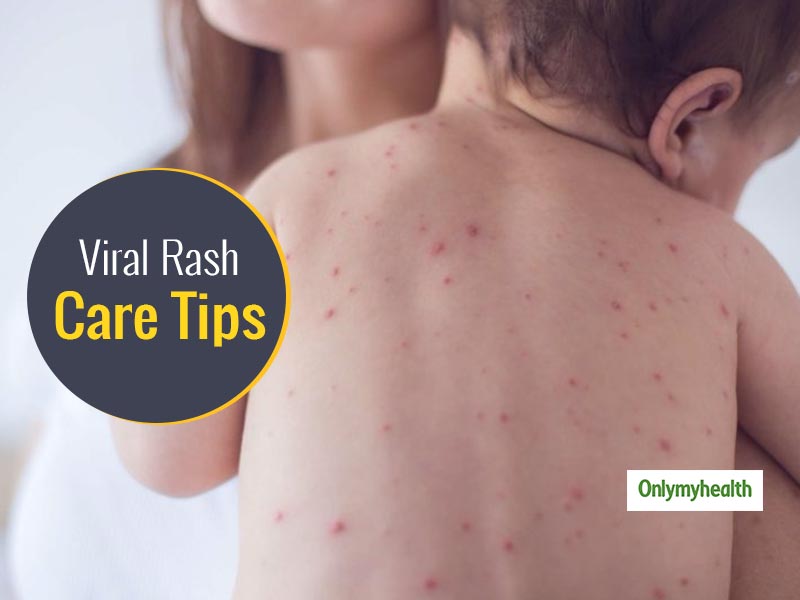
We adults can easily identify a rash on our body but babies cannot. They have just started to explore their body and everything is normal to them. Parents should be able to identify a rash or other problem with the baby and get it diagnosed then treated. There are different types of viral rash in babies that are caused after an infection with a virus. This leaves behind red or pink spots on the body of the baby. Some babies may also get cough, cold, fever, along with rashes. Read on to know more about viral rashes in babies, their symptoms and diagnosis.

Measles: Measles is a common viral rash triggered by a respiratory virus. This causes itchy spots on the skin. Getting the baby vaccinated can prevent this rash.
Chickenpox: The varicella-zoster virus causes chickenpox where the baby gets pus-filled lesions on the body with gradual progression. This infection lasts for about 2-3 weeks. It can also be prevented with vaccination.
Hand, foot, and mouth disease: This is another viral rash in babies caused by coxsackievirus. This is highly common with kids below five years of age.
Roseola: This childhood virus is also called the sixth disease which targets kids below two years. It is caused by human herpesvirus 6.
Also Read: Sharing Bed With Your Newborn? Know The Risks Of Co-Sleeping
Symptoms of Viral Rash In Babies
Most of these are non-serious and can subside with time. However, kids with weaker immunity or those who are born prematurely are vulnerable to rashes and illnesses. Identifying a viral rash in babies is easy if you know the signs and symptoms. Here are some common signs of a viral rash:
- Pinkish or reddish spots
- Lesions filled with pus
- Itchiness around the spots
- Blisters
- Stuffy or runny nose
- Fever
- Watery eyes
- Diarrhea
Below-mentioned are some severe symptoms of rashes that require immediate medical attention:
- Pain in or around the rash
- Baby is feeling lethargic all-day
- The baby is not drinking water or milk
- Bruises along with the rash
- Prolonged high fever
- The rash isn’t subsiding or improving after some days
To prevent the occurrence of rashes in babies, you must get them immunized. Follow the vaccination chart and when you need to get them done as per your child’s age. Also, keep a check on the seasonal illnesses and when it is that time of the year, take maximum precautions to keep the child safe. If the child looks irritated and discomforted, see a doctor.
Also Read: Baby Acne: Why Does It Happen And Ways To Get Rid Of Acne Spots
Preventing Viral Rash in Babies

It is possible to prevent the onset of a viral rash in babies if you take the necessary precautions:
- Get your baby immunized against all the possible viruses such as chickenpox, measles, rubella virus, etc. A doctor can provide you with a chart of all the vaccines.
- Do not take them to places with poor hygiene conditions.
- Take care of hygiene and environment during seasonal shifts as a virus is highly active during such times(such as monsoon).
- Keep them away from ill family members.
- Do not allow them to play with kids who are coughing and sneezing.
Read more articles on New Born Care
Read Next
Monsoon and Newborn Care: Tips For First-Time Parents To Keep The Baby Safe In Rainy Season
How we keep this article up to date:
We work with experts and keep a close eye on the latest in health and wellness. Whenever there is a new research or helpful information, we update our articles with accurate and useful advice.
Current Version